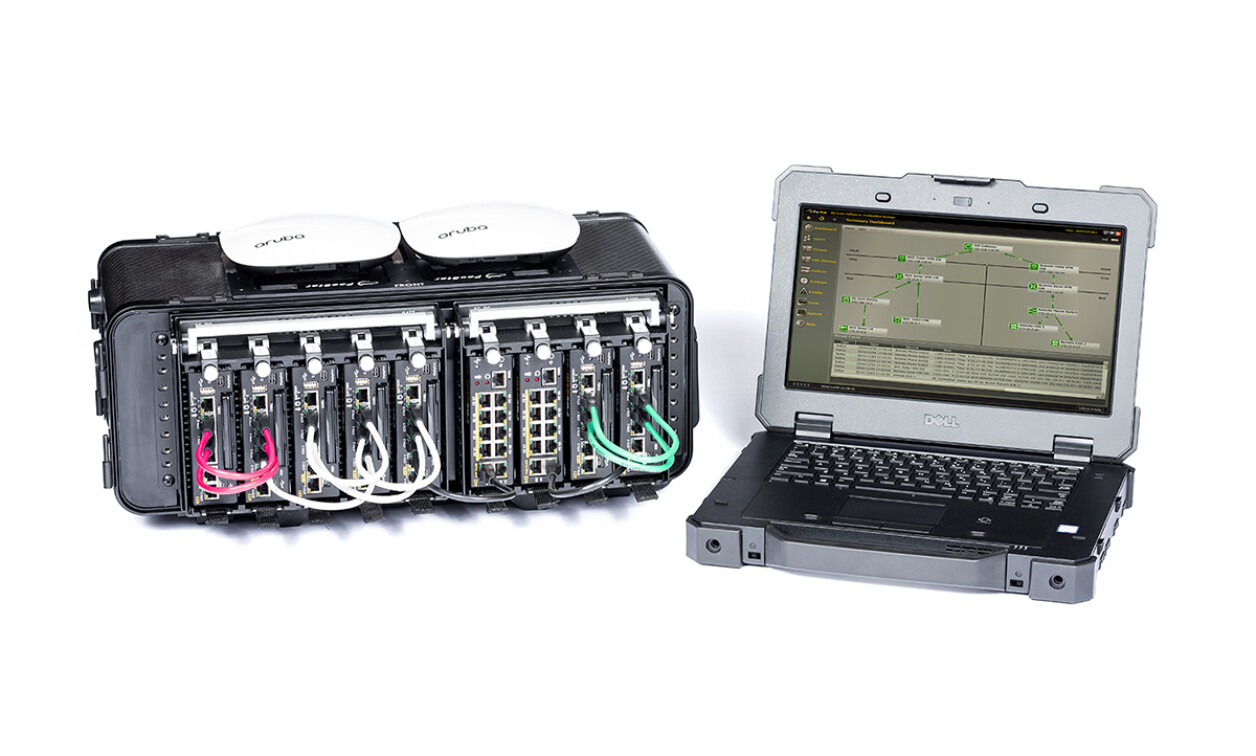Story
April 26, 2022

Secure wireless communications (SWC) technology for vehicle-to-vehicle (V2V) and vehicle-to-end user device (V2E) communication is useful for tactical environments as it improves network flexibility and operational maneuverability while reducing management complexity and cost. As seen in the commercial market, securely implementing wireless local area network (WLAN) communication opens the door for innovative solutions to existing and future operational challenges.
The goal of SWC is to provide controlled access to classified or controlled unclassified information (CUI) over any RF transport in the field, between vehicles and end users alike. Secure yet simplified system deployment, node integration, managed accessibility, network situational awareness, and configuration management are all a must for maintainability. Future ground-vehicle platforms, such as Command Post Integrated Infrastructure (CPI2), Next Generation Combat Vehicle (NGCV), Manned Fighting Vehicle (MFV), and Robotic Combat Vehicles (RCV) – will definitely improve fleet speed and mobility and ripe for improvements in SWC. These ground vehicle programs will greatly benefit from vehicle-mounted secure wireless communication architects using small-form-factor, rugged, modular open systems approach (MOSA) commercial off-the-shelf technologies (COTS) to interconnect vehicles, tents, users, and the like while maintaining sufficient security postures to meet various cybersecurity objectives.
Using properly configured, layered commercial technologies to correctly implement SWC promises multiple benefits including true mobility and maneuverability for both mounted and dismounted end-user devices (EUD). As an example, providing secured WLAN services inside vehicles and vehicle-mounted shelters – while simultaneously providing communications between vehicles over wireless mesh networks – will dramatically reduce (if not eliminate) setup time over current command-post deployments that are called “mobile” but still involve the installation of thousands of feet of networking cable and physical network infrastructure to interconnect vehicles and / or tents.
For true mobile use, Commercial Solutions for Classified (CSfC) or CUI architectures enables users to wirelessly interconnect vehicles and host secure WLAN service from vehicle platforms for various EUDs – such as smartphones, tablets, laptops, soldier wearables, or IVAS [Integrated Visual Augmentation System] goggles. Use cases for these devices over classified, unclassified, and / or coalition partner networks include augmented reality (AR), mobile command and control, wireless intercom, condition-based maintenance (CBM) offload, or ISR [intelligence, surveillance, and reconnaissance] collection and dissemination.
There are several challenges around the deployment of SWC, including cybersecurity resiliency (ie, intrusions detection and prevention), network configuration management, and situational awareness. Additionally, given existing and emerging electronic warfare (EW) and cyber threats it is assumed that cyberattacks will increase in sophistication and complexity. Without a robust monitoring and management solution the inclusion of wireless network technology at the tactical edge will increase both the attack-vector diversity and the training requirements of the warfighter.
Detecting (and preventing) intrusion attacks and continuously monitoring network access are essential to SWC since RF transport is a physically unguarded transport medium. Leveraging a robust communication management tool is needed to automate intrusion detection system / intrusion prevention system (IDS / IPS) response and reduce configuration time and configuration errors. For situational awareness, it’s important to have remote operations and management tools on both central and distributed vehicles (even some EUDs) to provide redundancy and continuous monitoring needed for real-time status, alerts, and auditing.
An example of a complete SWC solution for V2V and V2E is the combination of Curtiss-Wright’s PacStar Secure Wireless Command Post (SWCP), SWCP-Extension (SWCP-X), and IQ-Core Network Communication Management (NCM) software with Remote Operations and Management (ROAM) capability. The NCM software enables a single interface under a unified interface, with connections using SNMP, SSH, REST, APIs, or VICTORY. (Figure 1.)
The application runs within each node (ie, mission command vehicle, remote support vehicles, command tents, etc.) to interact and manage on- and off-platform network components. The ROAM component adds capabilities to enable centralized management of distributed network nodes at multiple tiers in a hierarchical and efficient manner, and is designed to manage networks in disconnected, intermittent, and limited (DIL) environments.
David Gregory is the senior principal solutions architect, PacStar. Jeff Nelson is the director, Business Development at Curtiss-Wright Defense Solutions for the PacStar product family.
Curtiss-Wright Defense Solutions – https://www.curtisswrightds.com/





